|
 DETECTING
A PET'S HIDDEN PAIN - Is your pet keeping something from you? DETECTING
A PET'S HIDDEN PAIN - Is your pet keeping something from you?
 DEADLY DISEASES TRANSMITTED
BY PETS
- Can "Fluffy" put us in danger? DEADLY DISEASES TRANSMITTED
BY PETS
- Can "Fluffy" put us in danger?
 FIRST AID - 9
things to know that may save your pet's life FIRST AID - 9
things to know that may save your pet's life
 A DIFFERENT KIND OF PET THERAPY - Meet Elliott, a
kangaroo! A DIFFERENT KIND OF PET THERAPY - Meet Elliott, a
kangaroo!
 WHEN CHILDREN TURN INTO CATS
- Children are dogs but teenagers are
cats! WHEN CHILDREN TURN INTO CATS
- Children are dogs but teenagers are
cats!
 FREE TO A GOOD HOME - So, what's the big
deal? FREE TO A GOOD HOME - So, what's the big
deal?
 PAPER-SHREDDERS & DOG
TONGUES
- Yes, it's probably what you're thinking... PAPER-SHREDDERS & DOG
TONGUES
- Yes, it's probably what you're thinking...
 2007 ASPCA "VICTORY
LIST"
- A year for the animals,
despite Michael Vick, Ellen, the pet-food recall.... 2007 ASPCA "VICTORY
LIST"
- A year for the animals,
despite Michael Vick, Ellen, the pet-food recall....
Also in this issue:
|
  Sheena
Easton's children have labeled her a "crazy cat lady,"
because she spoils her cats and lives with plastic on her furniture. Sheena
Easton's children have labeled her a "crazy cat lady,"
because she spoils her cats and lives with plastic on her furniture.
Ed Sayres, President of the ASPCA explains the
origins of cats and dogs. Just where do pets come from?
|
|
 New
Year's Resolutions for Pets New
Year's Resolutions for Pets
15. I will not eat other animals'
poop.
14. I will not lick my human's
face after eating animal poop.
13. I do not need to suddenly
stand straight up when I'm lying under the coffee table.
12. My head does not belong
in the refrigerator.
11. I will no longer be beholden
to the sound of the can opener.
10. Cats: Circulate a petition
that "sleeping" become a juried competition in major
animal shows.
9. Come to understand that
cats are from Venus; dogs are from Mars.
8. Take time from busy schedule
to stop and smell the behinds.
7. Hamster: Don't let them
figure out I'm just a rat on steroids, or they'll flush me!
6. Get a bite in on that freak
who gives me that shot every year.
5. Grow opposable thumb; break
into pantry; decide for myself how much food is 'too' much.
4. Cats: Use new living room
sofa as scratching post.
3. January 1st: Kill the sock!
Must kill the sock! January 2nd - December 31: Re-live victory
over the sock.
2. The garbage collector is
not stealing our stuff.
1. I will not chase the stick
until I see it leave the human's hand
thanks for everybody's contribution!
This weekend on Animal Radio®
 69% of us let our pets sleep in bed with us. 65% of us bought our pets Christmas
presents. 23% of us cook especially for our pet. 18% of us have
dressed our pets and 10% of us have taken their pets to work.
Do you let you pets in
bed? Find out what animal lovers nationwide have to say.
Also this weekend: Who will take care of "Baby" when
Mama is gone? More and more pet guardians are leaving wills for
their pets. Join Animal Radio's Hal & Judy live and
beachside from Ventura California with Aussie-counterparts Pet
Talk Radio's Brian and Kaye. Special guests include Dr.
Joyce Brothers and Animal Planet's Emergency Vets Dr.
Kevin Fitzgerald on botched-spays. 69% of us let our pets sleep in bed with us. 65% of us bought our pets Christmas
presents. 23% of us cook especially for our pet. 18% of us have
dressed our pets and 10% of us have taken their pets to work.
Do you let you pets in
bed? Find out what animal lovers nationwide have to say.
Also this weekend: Who will take care of "Baby" when
Mama is gone? More and more pet guardians are leaving wills for
their pets. Join Animal Radio's Hal & Judy live and
beachside from Ventura California with Aussie-counterparts Pet
Talk Radio's Brian and Kaye. Special guests include Dr.
Joyce Brothers and Animal Planet's Emergency Vets Dr.
Kevin Fitzgerald on botched-spays.
Canine Rabies Vaccine Challenge
Studies Begin
 One of the most important vaccine
research studies in veterinary medicine is underway at the University
of Wisconsin School of Veterinary Medicine in Madison. One of the most important vaccine
research studies in veterinary medicine is underway at the University
of Wisconsin School of Veterinary Medicine in Madison.
Dr. Ronald Schultz, a leading authority on veterinary vaccines
and Chair of the Department of Pathobiological Sciences, has
begun concurrent 5 and 7-year challenge studies to determine
the long-term duration of immunity of the canine rabies vaccine,
with the goal of extending the state-mandated interval for boosters.
These will be the first long-term challenge studies on the canine
rabies vaccine to be published in the United States.
Dr. Schultz comments that: "We are all very excited to start
this study that will hopefully demonstrate that rabies vaccines
can provide a minimum of 7 years of immunity." This research
is being financed by The Rabies Challenge Fund, a charitable
trust founded by pet vaccine disclosure advocate Kris L. Christine
of Maine, who serves as Co-Trustee with world-renowned veterinary
research scientist and practicing clinician, Dr. W. Jean Dodds
of Hemopet in California.
The Rabies Challenge Fund recently met its goal of $177,000 to
fund the studies, first year budget with contributions from dog
owners, canine groups, trainers, veterinarians, and small businesses.
Annual budget goals of $150,000 for the studies must be met in
the future.
Dr. Jean Dodds, DVM states: "This is the first time in my
43 years of involvement in veterinary issues that what started
as a grass-roots effort to change an outmoded regulation affecting
animals will be addressed scientifically by an acknowledged expert
to benefit all canines in the future."
Scientific data published in 1992 by Michel Aubert and his research
team demonstrated that dogs were immune to a rabies challenge
5 years after vaccination, while Dr. Schultz,s serological studies
documented antibody titer counts at levels known to confer immunity
to rabies 7 years post-vaccination. This data strongly suggests
that state laws requiring annual or triennial rabies boosters
for dogs are redundant. Because the rabies vaccine is the most
potent of the veterinary vaccines and associated with significant
adverse reactions, it should not be given more often than is
necessary to maintain immunity. Adverse reactions such autoimmune
diseases affecting the thyroid, joints, blood, eyes, skin, kidney,
liver, bowel and central nervous system; anaphylactic shock;
aggression; seizures; epilepsy; and fibrosarcomas at injection
sites are linked to rabies vaccinations.
Study co-trustee Kris Christine adds: "Because the USDA
does not require vaccine manufacturers to provide long-term duration
of immunity studies documenting maximum effectiveness when licensing
their products, concerned dog owners have contributed the money
to fund this research themselves. We want to ensure that rabies
immunization laws are based upon independent, long-term scientific
data."
http://www.rabieschallengefund.org
| Hear
breaking news as it happens - Animal Radio®
is streaming online 24/7 Listen LIVE Now! |
|
Best of Animal Radio®
2007
Pop Diva Sheena Easton
 Sheena
currently lives in Las Vegas with her two-legged family, as well
as her four-legged family of six cats and two dogs. Her kids
say she is headed for the title of "Crazy Cat Lady."
If you think you spoil your pets, listen in to see how Sheena
copes with hers! Sheena
currently lives in Las Vegas with her two-legged family, as well
as her four-legged family of six cats and two dogs. Her kids
say she is headed for the title of "Crazy Cat Lady."
If you think you spoil your pets, listen in to see how Sheena
copes with hers!
http://www.SheenaEaston.com
 Hear Sheena on Animal Radio® Hear Sheena on Animal Radio®
Therapy
Kangaroo
Noralynn Snow, Silverado Senior Living Community
 You've probably heard of therapy
dogs and cats, and even perhaps horses and pigs. But what about
a Kangaroo? Well, residents of the Silverado Senior Living Community
have the pleasure of visits from Elliott, a six-month old baby
Kangaroo. You've probably heard of therapy
dogs and cats, and even perhaps horses and pigs. But what about
a Kangaroo? Well, residents of the Silverado Senior Living Community
have the pleasure of visits from Elliott, a six-month old baby
Kangaroo.
Elliot visit the 120 citizens
of the center, who suffer from everything from Alzheimer's disease
to Parkinson's disease, and will even sit on their laps for hours
at a time.
When Elliot is not at the hospital,
he goes home with a staff member, Noralynn Snow, and actually
sleeps in bed with her.
 Hear Noralynn Snow on Animal Radio® Hear Noralynn Snow on Animal Radio®
Dom DeLuise
 Dom
DeLuise's first paying acting job was the role of "Bernie
the Dog" in "Bernie's Christmas Wish." Since then,
his voice-roles continue both in children's animation and on
the big screen. Dom is also a best-selling author of both cookbooks
and children's books. He currently hosts his own radio-cooking
segment on "On The House." Dom is a big bird lover
and is owned by several birds. He currently takes his bird Charlie
to local schools to teach children compassion about animals. Dom
DeLuise's first paying acting job was the role of "Bernie
the Dog" in "Bernie's Christmas Wish." Since then,
his voice-roles continue both in children's animation and on
the big screen. Dom is also a best-selling author of both cookbooks
and children's books. He currently hosts his own radio-cooking
segment on "On The House." Dom is a big bird lover
and is owned by several birds. He currently takes his bird Charlie
to local schools to teach children compassion about animals.
 Hear Dom
on Animal Radio® Hear Dom
on Animal Radio®
The Origin of Cats and Dogs
Ed Sayres, ASPCA
President
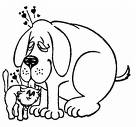 It
is reported that the following edition of the Book of Genesis
was discovered in the Dead Seal Scrolls. If authentic, it would
shed light on the question, "Where do pets come from?" It
is reported that the following edition of the Book of Genesis
was discovered in the Dead Seal Scrolls. If authentic, it would
shed light on the question, "Where do pets come from?"
And Adam said, "Lord,
when I was in the garden, you walked with me everyday. Now I
do not see you anymore. I am lonesome here and it is difficult
for me to remember how much you love me." And God said,
"No problem! I will create a companion for you that will
be with you forever and who will be a reflection of my love for
you, so that you will know I love you, even when you cannot see
me. Regardless of how selfish and childish and unlovable you
may be, this new companion will accept you as you are and will
love you as I do, in spite of yourself."
And God created a new animal
to be a companion for Adam. And it was a good animal. And God
was pleased. And the new animal was pleased to be with Adam and
he wagged his tail. And Adam said, "But Lord, I have already
named all the animals in the Kingdom and all the good names are
taken and I cannot think of a name for this new animal."
And God said, "No problem! Because I have created this new
animal to be a reflection of my love for you, his name will be
a reflection of my own name, and you will call him DOG."
And Dog lived with Adam and
was a companion to him and loved him. And Adam was comforted.
And God was pleased. And Dog was content and wagged his tail.
After a while, it came to pass
that Adam's guardian angel came to the Lord and said, "Lord,
Adam has become filled with pride. He struts and preens like
a peacock and he believes he is worthy of adoration. Dog has
indeed taught him that he is loved, but no one has taught him
humility." And the Lord said, "No problem! I will create
for him a companion who will be with him forever and who will
see him as he is." The companion will remind him of his
limitations, so he will know that he is not worthy of adoration."
And God created CAT to be a
companion to Adam. And Cat would not obey Adam. And when Adam
gazed into Cat's eyes, he was reminded that he was not the supreme
being. And Adam learned humility. And God was pleased. And Adam
was greatly improved.
And Cat did not give a ****
one way or the other.
http://www.ASPCA.org
 Hear Ed
Sayres on Animal Radio® Hear Ed
Sayres on Animal Radio®
 Cesar Millan, Be the Pack Leader Cesar Millan, Be the Pack Leader
Cesar Millan returns
for a fourth season of National Geographic's hit series the Dog
Whisperer and his fourth time on Animal Radio®.
This time he talks about "almost" failures and breed
bans.
 Hear Cesar
Millan on Animal Radio® Hear Cesar
Millan on Animal Radio®
Special Tribute to Buddy Hackett
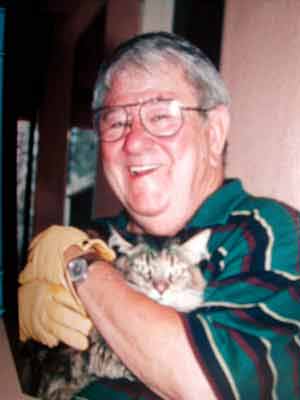 Leonard Hacker, a.k.a. "Buddy"
Hackett, was a class clown who grew up to become one of Hollywood's
most famous comedians. Leonard Hacker, a.k.a. "Buddy"
Hackett, was a class clown who grew up to become one of Hollywood's
most famous comedians.
Buddy loved animals and even
created a sanctuary.
Buddy Hackett passed away on
June 30, 2003 in Malibu, California. We only hope that he finally
met up with his beloved dog, Cupie, at the Rainbow Bridge.
 Hear Buddy
Hackett Tribute on Animal Radio® Hear Buddy
Hackett Tribute on Animal Radio®
Animal Radio® 2007 Newsbreakers:
Michael Vick Asks for Forgiveness
 Atlanta
Falcons football quarterback Michael Vick bows his head as he
makes a statement after pleading guilty to a federal dog fighting
charge. Atlanta
Falcons football quarterback Michael Vick bows his head as he
makes a statement after pleading guilty to a federal dog fighting
charge.
ASPCA Applauds Vick Suspension
 The
ASPCA® (The American Society for the Prevention of Cruelty
to Animals®) today applauded NFL Commissioner Roger Goodell's
strong and decisive action in suspending Michael Vick without
pay. The
ASPCA® (The American Society for the Prevention of Cruelty
to Animals®) today applauded NFL Commissioner Roger Goodell's
strong and decisive action in suspending Michael Vick without
pay.
Ellen Degeneres In the Doghouse:
Poochgate
 If you didn't see the original
airing of Ellen's show when she broke down telling the story
of Iggy, a dog she and partner Portia de Rossi adopted from Mutts
& Moms, chances are you have seen it replayed dozens of times
on the news.But what you may not have heard was the other side
of the story. If you didn't see the original
airing of Ellen's show when she broke down telling the story
of Iggy, a dog she and partner Portia de Rossi adopted from Mutts
& Moms, chances are you have seen it replayed dozens of times
on the news.But what you may not have heard was the other side
of the story.
We asked listeners what they
wanted to say to Ellen. "Ellen vs. Moms and Mutts is
like using a nuclear bomb for a fist-fight," said one caller
to Animal Radio®, "she should win an Oscar for that
performance." Another said, "if this is what shuts
Ellen down so she can't do her show, then she's not as in-touch
as we once thought. She needs to turn on the TV news and see
all the death and destruction. Maybe she should have called in
sick that day."
 Hear Newsbreakers
of 2007 on Animal Radio® Hear Newsbreakers
of 2007 on Animal Radio®
Guideline
to Detecting Pet's Hidden Pain
Dr. Tom Carpenter,
AAHA
 To
protect themselves from predators, animals naturally hide their
pain. Your pet may be suffering even though he isn't showing
obvious signs. Advancements in veterinary science have decoded
subtle telltale signs of animal distress. Observing your pet's
behavior is vital to managing his or her pain. How well do you
know your pet? Use these five clues from the American Animal
Hospital Association (AAHA) to help you understand your pet's
body language. To
protect themselves from predators, animals naturally hide their
pain. Your pet may be suffering even though he isn't showing
obvious signs. Advancements in veterinary science have decoded
subtle telltale signs of animal distress. Observing your pet's
behavior is vital to managing his or her pain. How well do you
know your pet? Use these five clues from the American Animal
Hospital Association (AAHA) to help you understand your pet's
body language.
Clue 1- Abnormal chewing habits
If your pet is showing abnormal chewing habits, such as dropping
its food or chewing on one side of the mouth, it may have a dental
disorder or a mouth tumor. Additional signs may include weight
loss, bad breath or excessive face rubbing. Routine dental checkups
are important to prevent and treat dental disorders and related
pain.
Clue 2- Drastic weight gain
or loss
Pain directly influences your pet's weight and eating habits.
Animals carrying excess weight have an increased chance of tearing
ligaments and damaging joints. Pets with arthritis or muscle
soreness may not want to access their food because bending over
is uncomfortable. Arthritis pain may also cause pets to gain
weight while their eating habits remain the same due to lack
of exercise.
Clue 3- Avoids affection or
handling
Did Fluffy used to be active and energetic, but now sits quietly
around the house? Avoiding affection or handling may be a sign
of a progressive disease such as osteoarthritis or intervertebral
disc disease. Although your pet may appear to be normal before
petting or handling it, the added pressure applied to its body
may expose sensitive and painful areas.
Clue 4- Decreased movement
and exercise
Arthritis or degenerative joint diseases (DJD) is the most common
cause of pain. Pets that limp may be reluctant to go up or down
stairs, exercise, or play. Weight and joint injuries can also
go hand-in-hand. Losing unnecessary pounds will help overweight
pets decrease pressure on sore joints and reduce pain. Consult
your veterinarian about exercises; diets and pain medications
that can help improve your pet's health.
 Clue
5 - Excessively licking or biting itself Clue
5 - Excessively licking or biting itself
It is normal for a pet to groom itself by licking, but you should
know your pet and know if they are doing this excessively.
Clue 6- Uncharacteristic "Accidents"
Pet owners often believe that
"accidents" are a result of behavioral issues. Although
behavioral issues may cause unwanted surprises, going to the
bathroom in inappropriate places may be caused by pain. Pets
with sore joints or arthritis may not make it to a convenient
location due to painful obstacles like stairs.
Urinary tract infections also
may cause a messy situation. In addition to having "accidents,"
symptoms of a urinary tract infection may include, lethargy,
fever, tender lower abdomen and difficulty urinating.
The lack of verbal expression
does not mean that your pet is not experiencing pain. Minor behavioral
change can be cause for alarm. Being aware of your pet's habits
can help you and your veterinarian assess and treat your pet's
pain. Diagnosing and managing pain is among the 900 standards
an animal hospital is evaluated on in order to become accredited
through AAHA. For more information or to locate an AAHA-accredited
hospital, visit http://www.healthypet.com
 Hear Dr. Tom Carpenter on Animal Radio® Hear Dr. Tom Carpenter on Animal Radio®
|
|
Coming Up on Animal Radio®:
 The
Monks of New Skete - Divine Canine will help to bring
out the divine in your canine! Obedient, devoted, and happy --
that's what we all want our dogs to be. Brother Christopher explains
how to get there through the stories of sixteen unruly dogs who
came to them with more than a few lessons to learn. He will explain
the tried and true techniques for influencing animal behavior,
showing how a caring attitude and honest communication can turn
any dog into a divine canine. The
Monks of New Skete - Divine Canine will help to bring
out the divine in your canine! Obedient, devoted, and happy --
that's what we all want our dogs to be. Brother Christopher explains
how to get there through the stories of sixteen unruly dogs who
came to them with more than a few lessons to learn. He will explain
the tried and true techniques for influencing animal behavior,
showing how a caring attitude and honest communication can turn
any dog into a divine canine.
New Skete is a contemplative monastic community of men and women
dedicated to living the monastic life together within the tradition
of the Eastern Orthodox Church. They are a stavropegial monastery
under Metropolitan Herman of the Orthodox Church in America.
We consist of the Monks of New Skete, the Nuns of New Skete,
and the Companions of New Skete. Each of the three communities
lives in separate houses within three miles of each other outside
the small village of Cambridge in rural upstate New York.
http://www.newsketemonks.com
 Perhaps you didn't get that cat
or dog you child wanted for Christmas because you felt your child
wasn't ready for such an animal. Perhaps you didn't get that cat
or dog you child wanted for Christmas because you felt your child
wasn't ready for such an animal.
Marc Morrone returns to Animal Radio®
to talk about Pocket Pets as starter pets for children. They
provide the perfect balance of a concealed cage environment with
an easy schedule of letting them out for exercise and play when
it is convenient for the family. Marc convinces even the most
die-hard skeptic that the differences between pet mice and sewer
rats are vastly different and pocket rodents may be easier to
care for than many parents may think!
http://www.ParrotsOfTheWorld.com
T
|
|
| ANIMAL
RADIO®
PRODUCT REVIEWS for
January |
|
Pawsitive I.D. DNA Test
    (rated 4 out of 5 paws) (rated 4 out of 5 paws)
 You
may have one of those Heinz 57 dogs and are not sure of their
genetic makeup but have always wondered. This home test is not
only a great way to find out, but it will also screen for dozens
of inherent genetic diseases. And, if your dog gets lost, this
is a great fingerprinting and identification tool. You
may have one of those Heinz 57 dogs and are not sure of their
genetic makeup but have always wondered. This home test is not
only a great way to find out, but it will also screen for dozens
of inherent genetic diseases. And, if your dog gets lost, this
is a great fingerprinting and identification tool.
It so easy to use. All you
have to do is complete a form, swab your pet's gums and then
mail the form and swab in. In about two weeks you will receive
all of your pet's information. They will even store your pet's
information for up to 15 years - all for $49.95 - what a deal!
http://www.pawsitiveid.net
     (rated 5 out of 5 paws) (rated 5 out of 5 paws)
Latka's Lap Dog Biscuits
featuring wheat-free
mini bones in 5 oz. bags
peanut butter, low fat chicken liver and low fat
parmesan cheese
ideal for small dogs and training treats
 We like them because the treats
contain no wheat, corn, soy, sugar, salt, coloring, preservatives
or additives, by-products or fillers. We like them because the treats
contain no wheat, corn, soy, sugar, salt, coloring, preservatives
or additives, by-products or fillers.
Even before the pet food recall,
I wanted to make sure that any treats I gave to my pets were
healthy treats.
Latka's treats, which are wheat-free
and healthy, mean I don't have to worry about my pets eating
them. They are bone-shaped and come in flavors such as peanut
butter, veggie delight and bacon cheddar, and the dogs love them.
To take the guesswork out of buying treats just think of Latkas!
http://www.delicioustreats.com
See other reviews at AnimalRadio.com.
Send products for review on-air and in this newsletter to: Animal
Radio Network™ Product Reviews, 233 East 330 North, Kanab,
Utah 84741. Product may not be returned. Allow 5 weeks for review.
|
Animal Minute on
Animal
Radio®
with Britt Savage |
Puppy Peg Gets a Leg Up With
a Prosthetic
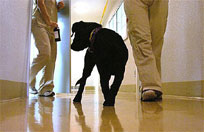 Peg
the three-legged dog might not be as famous as Lassie, but she
quickly became a world-renowned pup. The 4-month-old retriever
has become a canine celebrity, making appearances on The Discovery
Channel Canada, "The Tucker Carlson Show" on MSNBC,
and likely will be featured on "Inside Edition." Peg
the three-legged dog might not be as famous as Lassie, but she
quickly became a world-renowned pup. The 4-month-old retriever
has become a canine celebrity, making appearances on The Discovery
Channel Canada, "The Tucker Carlson Show" on MSNBC,
and likely will be featured on "Inside Edition."
Peg also was also interviewed
by Rex Miller, owner of The Greater Flint Prosthetic Center.
Miller lost his right leg when he was 15 and made Peg's prosthetic.
Peg was born without the equivalent of a human ankle, plus her
right paw. Peg's owner, Carol Beavnier of Macomb Township, who
trains leader dogs for the blind, looked on a Web site for handicapped
pets, and after a few phone calls found Miller. Miller had never
created a prosthetic for a dog before, and he's donating his
services and equipment, which normally would have cost several
thousand dollars.
Peg's new leg will be made
out of material similar to that used in bulletproof vests so
she can't chew through her leg. When Peg is done being a celebrity,
she will be a therapy dog, visiting people in nursing homes.
What
shreds paper, credit cards and dog tongues?
 It is the feared paper shredder! It is the feared paper shredder!
No one knows why Cross, a boxer
dog from North Carolina, decided to lick the paper shredder in
his family's home. When he got stuck, he started screaming for
about 10 to 15 minutes, attracting the attention of his family,
who finally figured out to put the shredder into reverse.
While Cross lost small chunks
of his tongue, he has made a complete recovery, and will have
no problems eating, drinking-and licking. And his family doesn't
have to worry about it happening again, because Cross now trembles
whenever he hears the paper shredder.
Britt Savage is a regular
Animal
Radio® correspondent as well as an incredibly talented
musician! She can be heard daily on Animal Radio Network.LISTEN TO ANIMAL RADIO NETWORK NOW
Veterinary Minute
on Animal Radio®
with Dr. Jim Humphries |
Deadly
Diseases Might Come From Our Pets!
 We
expect our pets to give us unconditional love and affection.
But, can pets also put us in danger? From super bacteria to deadly
viruses, it may seem that our pets are out to get us. The good
news is that most of these diseases are completely preventable! We
expect our pets to give us unconditional love and affection.
But, can pets also put us in danger? From super bacteria to deadly
viruses, it may seem that our pets are out to get us. The good
news is that most of these diseases are completely preventable!
Recent reports of dogs harboring
deadly staph bacteria as well as misconceptions about germs that
can be spread by pets may prevent some families from keeping
them. But how much of this is truth and how much is hype?
Any disease that can be transmitted
from animals to people is considered to be a zoonotic disease.
Literally, thousands of these diseases exist with several new
ones found each year. But only a few are actually associated
with our domestic pets. If you remove diseases that are spread
by vectors, such as mosquitoes and ticks, the list you are left
with would look like this:
- Rabies
- Leptospirosis
- Salmonella poisoning
- Methicillin-resistant staph
(MRSA)
- Roundworms and Hookworms
- Protozoan parasites, such
as Giardia
- Fungal diseases, such as ringworm
This list may appear to be
small, but among the members are some pretty serious diseases.
Rabies, as is well known, is an invariably fatal disease. Vaccination
protocols for our pets have reduced human rabies in the Western
world, but more than 40,000 people die from rabies worldwide
each year. Millions more are treated due to unknown animal bites
and potential exposure. Leptospirosis, Salmonella, and the "super-bug",
MRSA, are all bacterial diseases that can cause symptoms ranging
from mild vomiting to kidney failure and even, rarely, death.
At present, there has been no confirmed transmission of MRSA
from pets to people.
More widespread are diseases
caused by parasites, such as the common roundworms found in our
puppies and kittens. The Centers for Disease Control (CDC) estimate
that more than 10,000 people in the US test positive for roundworms
annually and more than 750 will partially lose their vision.
Worse yet, the raccoon roundworm is becoming more common. As
humans move into formerly wooded areas and raccoons adapt to
tolerate an urban lifestyle, infection with this parasite may
become more likely. Unlike the more ordinary canine roundworms,
raccoon roundworms have been known to cause death in humans.
But, even combined, the numbers
of people in the US and Canada affected by these diseases is
a small fraction compared with the number of people who are injured
by their pets. Dog bites, cat scratches, and horse-related injuries
are far more common. According to the CDC, more than 4 million
people are bitten by dogs annually and tens of thousands of people
seek medical attention because of an injury associated with riding
or working with horses.
So, what can be done to minimize
the chances for illness or injuries that come about from owning
pets? The simplest action is to simply follow a rule common to
restaurants, schools, and your mother; always wash your hands.
Routine, thorough hand-washing has been shown to reduce incidence
of many bacterial diseases, including the dreaded MRSA. In a
similar fashion, teaching your children to wash after playing
with the family dog or roaming the backyard will greatly diminish
any possibility of picking up a nasty parasite, like roundworms.
Spend time with and ask questions
of your veterinarian. She is your best resource for understanding
zoonotic diseases and how best to avoid them. Vaccine protocols
have greatly decreased many zoonotic diseases and similar strategic
de-worming plans may help to stop zoonotic parasites as well.
She may even be able to help you and your family understand the
common warning signs that often precede dog and cat bites.
Don't allow unfounded fears
to dictate your happiness with your four-legged friend. Educate
yourself and learn from the source who knows you and your pet
best - your family veterinarian! Visit www.MyVNN.com to watch a video giving you
more tips on how to keep you and your whole family safe from
disease.
Dr. Humphries is a veterinarian
in Colorado Springs and the National News Director for Veterinary News Network. Hear the Veterinary
Minute exclusively on Animal Radio®-LISTEN TO ANIMAL RADIO NETWORK NOW
| Ask the Cat Coach with
Marilyn Krieger |
Are My Cat Toys Safe?
 Dear Cat Coach, Dear Cat Coach,
My cat got all sorts of toys for Christmas, including fishing
pole toys, balls with crinkly stuff on them as well as other
cute little toys with pieces that look like they can be chewed
off. Even though these toys are labeled for cats, they look dangerous
to me. I'm worried my cats will chew off the eyes and ears or
chew the silver crinkly stuff and swallow them. These do not
look like safe cat toys to me. What do you think?
Perplexed and challenged
Dear Perplexed,
You are very perceptive! These toys can be very dangerous for
cats. They are marketed for cuteness so that people will buy
them. Unfortunately some of them have glued on eyes and ears
that are easily dismembered, chewed and swallowed. The pretty
little crinkly balls that look a little like tinsel can also
be a danger for some cats. If the shiny tinsel-like material
is chewed it may cut a cat's lip, if swallowed it can cut a cat's
intestines.
Fishing pole toys and the Cat
Dancer are wonderful toys, but they should be available for your
cat only when you are there to supervise the play. Fishing pole
toys, as well as other toys with strings, can wrap around a cat
and accidentally strangle them. These are really great toys for
cats, but only when someone is there to monitor and participate
in the play.
There are plenty of safe toys
to choose from. Look for toys that don't have parts that can
be chewed off and possibly swallowed. Toys that can disintegrate
when being mauled and mouthed need to be avoided, as well as
toys with paint that can be chewed or licked off. Check the size
of the toys. They need to be big enough so that they aren't accidentally
swallowed.
When choosing toys for cats,
it's important to visualize how your cat might play with the
toy and buy the toy based on safety first.
Marilyn Krieger, CCBC is
a Certified Cat Behavior Consultant certified through, and a
member of the Board of Directors of, The International Association
of Animal Behavior Consultants. She can be reached for phone
and on-site consultations to help solve cat behavior problems
either by e-mail marilyn@thecatcoach.com
or by phone: 650 780 9485. Marilyn is the Cat Behaviorist for
the Cat Channel, Cat Fancy Magazine's web presence. Additionally,
Marilyn teaches cat behavior classes and is available for speaking
engagements. You can find out more about The Cat Coach at www.thecatcoach.com.
Copyright 2008 Marilyn Krieger, CCBC All Rights Reserved.
First
Aid - Things to Know That May Save Your Pets' Life
 There are three keys to managing
any emergency: don't panic, protect yourself from injury, and
prepare in advance. There are three keys to managing
any emergency: don't panic, protect yourself from injury, and
prepare in advance.
When faced with an injured
or severely ill pet, it is important that you spend a moment
to assess the situation. Determine if the pet needs to be moved
immediately. Decide if there is a danger of further injury to
the pet or to first aid givers. For example, great care must
be used before assisting a pet injured on a busy roadway. It
may be safest to call for help so that traffic can be diverted
before anyone provides first aid. You must insure that you won't
be injured yourself - either by the surroundings or by the injured
animal. Prepare in advance by knowing the location and numbers
of emergency animal care facilities. These guidelines should
help.
1. Behavior Knowledge. Understanding
how to approach an injured pet safely is critical. Animals may
respond to fear and pain instinctively, even if they know you
well. You cannot assume that your own pet won't bite you, because
pain or fear may provoke even a docile animal to aggression.
Preventing a bite to yourself or other assistants must be your
first goal.
How to Approach an Injured
Pet Safely
If you encounter a dog in need
or injured in some way, your first reaction may be to run to
help. That's a common reaction - most people don't want to see
an animal in pain. But without taking the proper precautions,
you could get injured. And being injured along with the animal
won't help the situation.
It is important to remember
that even the sweetest dog may bite if she is frightened or in
pain. Here are some guidelines for approaching an injured pet.
Assess the Situation
Use common sense: Remember
that your safety comes first.
If the animal is in the middle
of the road, watch for traffic before going to assist.
If there is a house fire, do
not enter the house until the fire department has eliminated
the danger - very likely firefighters will rescue the pet.
If your pet has fallen, make
sure no more items are ready to fall on you.
If your pet is covered in a
toxic substance, do not touch the animal unless you are wearing
protective gloves or can cover him with plastic (or some other
protective material).
If your pet is covered in blood,
do not touch the animal without protective gloves. Even though
there are few diseases you can get from animal blood, there is
no guarantee that human blood is not mixed in from someone else.
That person's blood may have spilled onto the animal, and with
the threat of HIV, hepatitis or other illnesses, exposure to
any blood is not recommended.
Determine if the Dog is Aggressive
If the animal shows signs of
fear or aggression, muzzling him is essential before helping.
As you approach the animal, pay attention to his body language
and any sounds he is making. Use a soft, gentle, calming voice.
Avoid direct eye contact with an injured pet since some will
perceive this as a confrontation or threat. A wagging tail is
irrelevant. Some dogs with wag their tails throughout an attack.
Here are some body language
signals to look out for:
Growling
Snarling with teeth exposed
Hair along back standing on end
Ears straight back and flat against head
Tail tucked between legs
Lunging toward you with snapping jaws
Intense staring
Submissive behavior such as
lying on ground with belly exposed (these dogs can quickly become
fear-biters). Remember, keeping yourself safe and uninjured is
just as important as helping the injured animal. You cannot be
much help if you also need medical assistance. If the animal
you are trying to help is aggressive and there is a risk that
you may get injured, do not try to administer treatment. Call
a local animal shelter, humane society, veterinary clinic, animal
control officer or police department. Try to stay nearby to watch
where the animal goes and to assist when help arrives. If necessary,
direct traffic away from the injured animal until further help
arrives.
How to Make and Place a Muzzle
Injured animals are usually
in pain, and an animal in pain may lash out. One of the most
important things you need to do before helping an injured animal
is to place a muzzle on the mouth. Even your own sweet dog may
bite if frightened or in severe pain. There are several methods
to muzzle an animal but never muzzle one that is vomiting, has
difficulty breathing or is coughing.
Muzzles can be purchased from
pet stores or veterinary clinics. These muzzles come in a variety
of sizes. Having a muzzle to fit your own pet should be included
in your pet's first-aid kit.
If you do not have a manufactured
muzzle, you can make a temporary muzzle out of tape, nylon stocking,
neckties, thick string, belts or strips of fabric.
Tie a knot in the middle of
the material. If you're using tape, fold the tape lengthwise,
so there are no sticky edges.
Make a large loop in the material.
While standing behind or alongside
the animal, slip the loop over the animal's nose.
Once the loop is over the nose,
quickly and snugly tie the loop on top of the nose.
Take the 2 material ends alongside
the nose and twist one time underneath the nose.
Take the 2 ends and pass each
behind an ear and tie behind the head.
For breeds with short noses,
you may need to take an extra piece of material and tie a connection
between the loop over the nose and the tie behind the head. Make
sure the muzzle is snug. Be prepared for the animal to struggle
against the muzzle. Some animals will even be able to get out
of the muzzle. If the animal develops breathing problems or appears
to be trying to vomit, remove the muzzle immediately.
2. Veterinary Telephone Number
and Address. Keep the name and phone number of your family veterinarian
and local veterinary emergency facility handy. This simple guideline
can help save the life of your pet. Most veterinarians are open
during normal business hours - 8 am to 5 pm. Determine how your
veterinarian handles emergency calls. Some have emergency pagers,
and in larger metropolitan cities, many contribute to or use
an emergency facility for after-hour emergency calls. Calling
first can often answer simple questions or prevent a trip in
the wrong direction. Even in situations that are not apparently
life-threatening, your questions or concerns may be best considered
by a professional who can advise you whether or not to come in.
3. Names and Telephone Number
of a Friend. If possible, have a friend assist you, especially
if your pet needs to be hospitalized. In the car, it is best
to have one person keep the pet calm or settled while the other
drives to the emergency clinic or veterinary hospital.
4. Heimlich Maneuver. Though
not a commonly used or needed skill, knowing how to perform the
Heimlich maneuver for your dog can be a life-saving skill. Only
perform the Heimlich if you are absolutely certain your pet is
choking on a solid object (such as a toy), and you have been
properly trained in the technique. Improperly used, the Heimlich
can cause injury to your pet.
Many people confuse difficulty
breathing with choking. If you witness your pet ingesting an
item and then immediately begin pawing at the face, the throat,
acting frantic, trying to cough and having difficulty breathing,
only then should the Heimlich maneuver be considered. If your
pet is not really choking, the Heimlich can cause serious injury.
After determining that your
pet is choking, remove any item that may be constricting the
neck. Examine inside the mouth and remove any foreign object
you see. Do not blindly place your hand down your pet's throat
and pull any object you feel. Dogs have small bones that support
the base of their tongues. Owners probing the throat for a foreign
object have mistaken these for chicken bones. Do not attempt
to remove an object unless you can see and identify it.
If your pet is small and you
cannot easily remove the object, lift and suspend him with the
head pointed down. For larger animals, lift the rear legs so
the head is tilted down. This can help dislodge an item stuck
in the throat.
Another method is to administer
a sharp blow with the palm of your hand between the shoulder
blades. This can sometimes dislodge an object. If this does not
work, a modified Heimlich maneuver can be attempted.
Grasp the animal around the
waist so that the rear is nearest to you, similar to a bear hug.
Place a fist just behind the
ribs.
Compress the abdomen several
times (usually 3-5 times) with quick pushes.
Check the mouth to see if the
foreign object has been removed.
This maneuver can be repeated
one to two times but if not successful on the first attempt,
make arrangements to immediately take your pet to the nearest
veterinary hospital.
Even if you are successful
in removing a foreign object, veterinary examination is recommended.
Internal injury could have occurred that you may not realize.
5. Bandaging. A bandage helps
to cover or apply pressure to a wound to protect or control hemorrhage.
Bandages can be fabricated from towels, washcloths, paper towels,
or just about any piece of fabric.
You and your pet are far from
help (perhaps camping or hiking), and your pet hurts himself.
Would you know how to stabilize him until you could reach a veterinarian?
This article provides some guidance in case of such an emergency,
but it does not replace the skill and expertise of your veterinarian.
If possible, it is better to let a trained expert treat your
pet than yourself.
6. Stopping Bleeding. If there
is an obvious source of bleeding, apply pressure to control the
hemorrhage. Pressure is best applied with a clean cloth or towel
applied directly to the wound.
7. Towels or Blankets. Blankets
and towels can aid in picking up an injured pet or to control
bleeding. You can use a towel to wrap a frightened pet or cover
a wound. Frightened pets are often relieved by the dark calm
enclosure of a blanket.
8. Board, Stretcher or Strong
Blanket. Strong sturdy instruments are important to help move
or transport severely injured pets that are unable to walk. A
small board, a sturdy wool blanket, a piece of canvas or a hammock
can be used. Gently roll or move the pet onto the device. Typically,
two people are needed to pick up and move the pet when using
a stretcher. Be careful as this procedure may cause pain to an
injured pet, and exposes the helpers to the risk of bite injury.
9. Finances. Probably the last
thing people think about during an emergency is how to pay the
bill. Emergency clinics and veterinary practices are no different
than other small businesses, and they need to pay their own bills
to survive. Expect to leave a deposit when admitting a pet and
be prepared to pay for services rendered. Veterinary insurance
can be most beneficial in these situations; however, often the
veterinary clinic will require that you pay the bill and the
insurance company will reimburse you after the invoice is submitted.
Most veterinary clinics do accept major credit cards, and there
are some veterinary clinics that offer other financial alternatives
through banks.
| For
Pet's Sake with Karen
Lee Stevens |
New Year's "Mews"ings
 By
the time you read this, it will be January 2, 2008. I'm fervently
composing this column the week before Christmas in anticipation
of taking my annual two-week "cat nap" (translation:
vacation) over the holidays. By
the time you read this, it will be January 2, 2008. I'm fervently
composing this column the week before Christmas in anticipation
of taking my annual two-week "cat nap" (translation:
vacation) over the holidays.
Like many of you, I usher in
the new year by penning a lengthy list of resolutions some
I keep and some that eventually fall by the wayside. For me,
my goals usually include activities that will benefit my health
and further my writing career. For instance, I have set an intention
of boosting my immune system by eating healthier foods and drinking
soothing teas, rather than slurping my much-loved, adrenaline-inducing
lattes. Perhaps more imperative than ingesting tofu and tea,
however, I have vowed to continue my crusade of raising awareness
about the importance of compassion and respect for all the animals
with whom we share the planet. I have recommitted myself to my
work with All for Animals, Inc. (www.allforanimals.com), the non-profit organization
I founded eleven years ago today. AFA has afforded me a voice
through television, radio, newspapers, and the Internet
to speak on behalf of abused and neglected animals who
cannot speak for themselves.
As an ardent animal lover,
I am surprised when people pose an all-too-common question to
me: "Why are you always helping animals when there are so
many people who need assistance?" I respond by sharing my
belief that all beings are interconnected with one another. Wouldn't
it make sense then, I ask, that we would choose to protect, respect,
and honor ALL life, whether it is human or animal?
To illustrate my point, let
me tell you about my recent foster kitten experience. For two
months this summer, I spent a good deal of time and energy caring
for a stray cat and her five adorable offspring. The experience
was extremely gratifying for me and one I hope to repeat in the
near future. When it was time for the kittens to begin new lives
in their forever homes, I interviewed Ruth, an 84-year-old lady
who expressed an interest in adopting little Romeo and Serena.
Ruth had lost her husband just six months prior and felt the
kittens would help ease her loneliness and despair. I admit that
I was a little worried about the elderly woman's ability to care
for two rambunctious kittens, but Ruth assured me that her son
and granddaughter would be stopping by often to check on them.
Now, several months later, Ruth says there isn't a day that goes
by that she doesn't feel an immense love and appreciation for
her feline family.
Success stories such as these
inspire me to continue speaking and writing about the power of
the human/animal bond. It is my hope that one day we will realize
animals are an integral part of our own health and happiness.
No longer will we find it necessary to choose between helping
a person and helping an animal in need, for they are both worthy
of our time and financial resources.
It is a new day..a new year.
and with it comes endless possibilities. May 2008 bring forth
a profoundly deeper connection among ALL creatures.
What are your New Year's
resolutions? Email them to Karen (Founder and President of All For
Animals, Inc.) at karenleestevens@cox.net
|
|
How
Will You Know?
 There
is a line where your intellect takes over and negates what heart
says is the appropriate thing to do. Listen to your intellect
and you will let a blessing pass through your fingertips. Because
we are raised in a very intellectually based society with everything
being learned directed toward the intellect, we tend to over
look what our hearts are saying and go with what our logic, rational,
analytical thinking and the like tell us is the "right"
thing. And, interestingly, the intellects "right" thing
is very often the "wrong" thing according to the heart. There
is a line where your intellect takes over and negates what heart
says is the appropriate thing to do. Listen to your intellect
and you will let a blessing pass through your fingertips. Because
we are raised in a very intellectually based society with everything
being learned directed toward the intellect, we tend to over
look what our hearts are saying and go with what our logic, rational,
analytical thinking and the like tell us is the "right"
thing. And, interestingly, the intellects "right" thing
is very often the "wrong" thing according to the heart.
Our Hearts, because they make choices based on love, always take
us to the most appropriate place for our highest and best. Intellect
usually makes choices based on fear (of something). So it's easy
to see why the choices can be so opposite. Intellect usually
is always looking to be safe (meaning we aren't) and looks for
the reasons we might not be safe. Heart always looks for the
most loving thing that is aligned with the Soul, which translates
into blessings. Since we are starting a new year, why not start
looking for the blessings around you.
Following are some examples of how heart connects us to greater
things, things we may not be aware of in our intellect, things
that take us to higher places and helps us become better human
beings with greater understanding. This works in every area of
life including with those wonderful animals who grace our lives.
Each of the animal kids I live with has come to me due to some
circumstance where listening to my heart has led me to the appropriate
dog, cat, horse, bird. When things happen, I don't question them,
I just say yes because I've learned following your heart is the
most wonderful experience. Braveheart came when I sat in front
of a litter of puppies and saw the tip of his tail. Amira came
when I found her wandering toward the door (out of her whelping
box - the only out of the box) when I arrived at her breeder's.
Mercury and Venus came when Mercury wrapped his legs around my
legs as a kitten in a pet store and Venus jumped into the bag,
which held the bird food I had just purchased. Ala came when
the floor director of the TV show I was doing at the time said
she had a horse she needed to sell. DreamWeaver came to me through
a vision. Deleite and Diego came when I opened an email from
a friend asking if I knew someone who would like these baby horses.
Sing came when I heard his lovely song, the softest I had ever
heard. Song when she jumped up and down at the store in her cage.
None of these choices were made through an intellectual process.
Sometimes we just need to be somewhere at a specific time like
getting on a ferry (or at least we think we do). There might
be a store conveniently located for you to stop and purchase
vitamins you know you need for your animal kid. Instead of stopping
for the vitamins, you drive by it because you want to make sure
you get to the ferry on time. Of course, you make the ferry in
plenty of time. (Your heart would have stopped for the vitamins,
trusting you would be at the ferry in plenty of time.) Then the
noise starts in your head. Your intellect lets you know that
you would have had time to stop and now you will be even later
getting home if you stop at the out of the way store. Those thoughts
just start running through your head over and over and over.
(By the way, there is really no satisfying the intellect. It
will think of everything else that it doesn't like about whatever
choice you might make.) When you drive off the ferry, you go
to the vitamin store that is way out of your way. Now more out
of necessity than choice. And something interesting happens.
As you are purchasing your vitamins, you talk with the clerk
and, it just so happens he needs your service. So, you give him
your business card. As you leave, it dawns on you that there
would have been no wrong answer for which store to stop at. The
first one would have spoken of trust and, as for the second store;
you were actually at the appropriate store because you helped
the clerk regarding his animal kid. Your heart feels so wonderful
with either of your choice and especially because you have been
of service.
During one of Washington's recent floods, a mom, several human
children and four dogs were trying to escape when a wall of water
from a broken dam came toward their house. The mom had everyone
in the car and realized she couldn't escape that way so moved
the human children to high ground. When she went to save the
dogs in the car, the water would not let the door of the car
open. Her screams brought a man to help. She asked him to break
the window to let the dogs out. His intellect told him that since
the car was new, he did not want to break the window. As a result
of listening to his intellect instead of his heart, the dogs
drowned.
My friend and coordinator, Martha was visiting one of her dear
friends who had a rocking chair that had been left out in the
weather and was falling apart. The chair had been her grandmother's.
This rocking chair caught Martha's attention. Because Martha's
heart wanted the chair, and in spite of Martha's husband getting
his dander up, she took it home. If she heard one word from her
husband about how we don't need the rocking chair, her message
to him was, "How do you know that maybe we are to save and
repair the chair to give her friend's unborn granddaughter?"
A lesson for Martha to stand up for herself no matter what was
happening around her when her heart spoke.
Then, I was in a store buying my groceries when I walked by a
display. I was energetically yanked by my collar to come back
to buy the container of chocolate covered fruit for my friend.
Since I had never seen her eating anything like this, my intellect
would have dismissed the message. Knowing better than to do that,
I bought the item and gave it to her. All the while thinking
this was a very strange gift and knowing that for some reason
it must have been perfect. As with all heart choices, it was
perfect. She was so excited to receive it! She does not usually
eat sweets because they give her a headache. However, these were
different and she had actually seen them and decided not to buy
them for herself even though she wanted them. My friend was thankful
I listened. How do you know this is a sweet that she could eat
without getting a headache? You don't. But, someone does
and sends the message to your heart to listen to.
How will you know whether your intellect or your heart is telling
you an answer? Intellect always involves thinking and rationalizing
- coming up with reasons why. Heart very often goes against everything
that seems reasonable and very often there are no reasons why
other than it feels like the right thing to do. We can let our
ego dictate what is the right thing to do or we can let our hearts
show us what is the appropriate course of action. No matter what
is happening in our lives whether it is large or small, we have
two ways of interpreting. We can look at how bad things are (the
typical course of the intellect) or we can look for the blessings
(the normal course of the heart). If all we see is the negative,
then all there will be is negative. Yes, at first you have every
right to say, "Oh blaa, blaa." It is what you do next
that sets the wheels in motion. Step back and start listening
for the blessing in the midst of the chaos, blessings whether
great or small will show up. That is how you will know. Heart
is a great way to go and it is the way animals run their lives.
Let's follow their lead.
Until next time, I'm Joy reminding you, you can never love your
animal companions too much. You can only love them, hopefully,
enough.
If you would like to
schedule a private session with Joy, call 425-867-1779 or go
to www.TalkWithYourAnimals.com.
If you are interested in being a caller on Talk with your Animals,
please email Martha@AnimalRadio.com
to make arrangements. Joy Turner is a regular Animal Radio®
correspondent. She can be heard daily on Animal Radio Network.
LISTEN TO ANIMAL RADIO NETWORK NOW
 Email
your events to: root@AnimalRadio.com Email
your events to: root@AnimalRadio.com
Clicker Expo 2008
Los Angeles, CA
February 1-3, 2008
Lexington, KY
March 28-30, 2008
What's new at ClickerExpo 2008? Just about every course-80% of
the 2008 program is brand-new! With new faculty bringing new
perspectives, ClickerExpo is a must-attend event in 2008.
ClickerExpo has developed a
unique culture of mutual discovery. Teachers and attendees listen,
practice, and learn from each other. Maybe that's why just about
every attendee who turned in a survey said that previous ClickerExpos
met their expectations, exceeded their expectations, or gave
them a "Wow" experience.
ClickerExpo 2007 was sold out.
Don't miss 2008 and a chance at your own "Wow" experience!
ClickerExpo 2008 Highlights
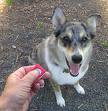 *
Amazing new courses *
Amazing new courses
* Watch the Faculty Train
* Find Your Niche
* Love Those (smaller) Learning Labs!
* Nighttime and Lunchtime Are the Right Times
* Our 2008 Faculty
Whether you've been to ClickerExpo
many times before or this is your first time, you are in for
a treat. In 2008 we have 50 courses and 80% of them are brand
new! These 39 new courses include 23 new Learning Sessions and
16 new hands-on Learning Labs.
Have a look at the full schedule,
and you'll find 26 courses for trainers with advanced and intermediate
training skills, 17 new courses for all skill levels, and 7 foundation
courses for new clicker trainers.
| Rover, Get Off Her Leg! with
Darlene Arden |
 ASK
"THE DOG EXPERT"
- by Darlene Arden, Certified Animal Behavior Consultant ASK
"THE DOG EXPERT"
- by Darlene Arden, Certified Animal Behavior Consultant
Q. Dear Darlene Arden,
My dog got a bunch of new toys for the holidays. I'm not sure
if all of them are safe. There are squeaky toys and plush toys
and tug toys. How can I determine which ones are good for my
dog? Thanks!
Ellie
A. Dear Ellie,
I'm glad you asked. Most people give their dogs toys without
a second thought. There's no safety council for toys for pets
as there is for toys meant for children so you have to be very
careful to inspect the toys before you give them to your dog
and then supervise all playtime with new toys before leaving
your dog alone with his newest acquisition.
 First,
look over each toy. If there are parts that can be easily removed,
remove them before the dog can. He would be likely to swallow
them. If it's a squeaky toy and your dog likes to "kill"
the squeaker, either be sure it's one he can't get at or remove
it before he can "kill" and swallow it. First,
look over each toy. If there are parts that can be easily removed,
remove them before the dog can. He would be likely to swallow
them. If it's a squeaky toy and your dog likes to "kill"
the squeaker, either be sure it's one he can't get at or remove
it before he can "kill" and swallow it.
Be sure that the toy is constructed
sturdily. Some rubber toys fall apart and bits can be swallowed,
plush toys can also come apart or be easily destroyed by an active
dog who might decide to eat the stuffing. Always examine your
dog's toys for wear and tear and repair or replace any that are
starting to fall apart or seams that are opening.
Dental toys that are made of
rope can get very dirty and become a source of germs. And tug
toys are best left for dogs to play tug with another dog. Most
humans don't know how to properly play the game and can create
problems. The dog should not learn that he can be mouthy and
take things away from a human. While a correctly played game
of tug can build confidence, an incorrectly played game can cause
behavior problems.
Be sure that the toys you give
your dog are not so small for him that they can be swallowed.
And be careful of the source of the toys. Recently lead paint
has been found in toys made in China for children. It's not unreasonable
to assume that the same thing has happened with toys made there
for pets.
Have fun with your dog! Remember that you are his favorite playmate!
"Ask the Dog Expert"
is a regular column by Darlene Arden. This month's column features
information found in her book, "The Angell Memorial Animal
Hospital Book of Wellness and Preventive Care for Dogs,"
(McGraw-Hill), which helps you, in concert with your veterinarian,
design a wellness program based on your dog, your lifestyle and
the place where you live, and "Small Dogs, Big Hearts,"
(Howell Book House), and the newly released, "Rover, Get
Off Her Leg!" Further information may also be found on her
website: www.darlenearden.com.
Copyright 2008 by Darlene Arden. All Rights Reserved.
| ANIMAL
RADIO® BOOK REVIEW for January |
|
    \(rated 3 and 1/2 out of 5 paws) \(rated 3 and 1/2 out of 5 paws)
 Salty Dogs by Jean M. Fogle Salty Dogs by Jean M. Fogle
Hardcover: 112 pages
Publisher: Howell Book House (Sept 2007)
ISBN-10: 0470169044
ISBN-13: 978-0470169049
Reviewed by Judy Francis
The name Salty Dogs might be
misleading at first. But when you open the book, you realize
that these are dogs who are enjoying a moment at the beach. I
am sure you have seen them yourselves. You know, the dog who
is running in and out of the surf or the dog who is just frolicking
in the sand.
We can learn a lot from these
animals who live in the moment. Ahh, looking at all of the happy
dogs at the beach takes me back to the "dog days of summer."
     \(rated
5 out of 5 paws) \(rated
5 out of 5 paws)
 National Geographic Kids Comic Book Creator DVD
- Silly Pets National Geographic Kids Comic Book Creator DVD
- Silly Pets
ASIN: B000V2L74A - PC Windows
Item model number: 160200501-2
Silly Pets is an interactive
DVD that allows you to create comic books using photos of your
own pets. You can easily download your own pet photos to create
a personal comic book. This is also a great gift for friends
and family using photos of their animals.
In only minutes I was able
to create a great page on my pets. There are many types of text
you can use and you can even add clip art to your picture. It
is so easy to use, even children can do it.
Even though I only spent a
few minutes working on my comic book, I can easily see spending
hours being creative with this program, as you will get hooked.
Now, let me get back to my comic book!
See other reviews at AnimalRadio.com.
Send books and literature for review on-air and in this newsletter
to: Animal Radio Network™ Book Reviews, 233 East 330 North,
Kanab, Utah 84741. Product may not be returned. Allow 5 weeks
for review.
|
When
Children Turn Into Cats
by Adair Lara
 I JUST REALIZED THAT while children
are dogs, loyal and affectionate, teenagers are cats. I JUST REALIZED THAT while children
are dogs, loyal and affectionate, teenagers are cats.
It's so easy to be the owner
of a dog. You feed it, train it, boss it around and it puts its
head on your knee and gazes at you as if you were a Rembrandt
painting. It follows you around, chews the dust covers off the
Great Literature series if you stay too long at the party and
bounds inside with enthusiasm when you call it in from the yard.
Then, one day around age 13,
your adoring little puppy turns into a big old cat. When you
tell it to come inside, it looks amazed, as if wondering who
died and made you emperor. Instead of dogging your footsteps,
it disappears. You won't see it again until it gets hungry; when
it pauses on its sprint through the kitchen long enough to turn
its nose up at whatever you're serving. When you reach out to
ruffle its head, in that old affectionate gesture, it twists
away from you, then gives you a blank stare, as if trying to
remember where it has seen you before.
It sometimes conks out right
after breakfast. It might steel itself to the communication necessary
to get the back door opened or the car keys handed to it, but
even that amount of dependence is disagreeable to it now.
Stunned, more than a little
hurt, you have two choices. The first -- and the one chosen by
many parents -- is that you can continue to behave like a dog
owner. After all, your heart still swells when you look at your
dog, you still want its company, and naturally when you tell
it to stop digging up the rose bushes, you still expect it to
obey you, pronto.
IT PAYS NO attention now, of
course, being a cat.
So you toss it onto the back
porch, telling it it can stay there and think about things, mister,
and it glares at you, not deigning to reply. It wants you to
recognize that it has a new nature now, and it must feel independent
or it will die.
You, not realizing that the
dog is now a cat, think something must be desperately wrong with
it. It seems so anti-social, so distant, so sort of depressed.
It won't go on family outings.
Since you're the one who raised
it, taught it to fetch and stay and sit on command, naturally
you assume that whatever is wrong with it is something you did,
or left undone. Flooded with guilt and fear, you redouble your
efforts to make your pet behave.
Only now, you're dealing with
a cat, so everything that worked before now produces exactly
the opposite of the desired result. Call it, and it runs away.
Tell it to sit, and it jumps on the counter. The more you go
toward it, wringing your hands, the more it moves away.
Your second choice is to do
the necessary reading, and learn to behave like a cat owner.
Put a dish of food near the door, and let it come to you. If
you must issue commands, find out what it wants to do, and command
it to do it.
BUT REMEMBER THAT a cat needs
affection, too, and your help. Sit still, and it will come, seeking
that warm, comforting lap it has not entirely forgotten. Be there
to open the door for it.
Realize that all dog owners
go through this, and few find it easy. My glance used to travel
from my cat Mike looking regal and aloof on the fence to a foolish
German shepherd on the sidewalk across the street, jumping for
joy simply because he was getting to go outside. Now I miss the
little boy who insisted I watch "Full House" with him,
and who has now sealed him into a bedroom with a stereo and TV.
The little girl who wrote me mash notes and is now peeling rubber
in the driveway.
The only consolation is that
if you do it right, let them go, be cool as a cat yourself, one
day they will walk into the kitchen and give you a big kiss and
say, you've been on your feet all day, let me get those dishes
for you -- and you'll realize they're dogs again.
Adair Lara, for 12 years
a popular columnist with the San Francisco Chronicle, now writes
magazine features and books in addition to teaching writing and
working one-on-one with writers. http://www.AdairLara.com
"Free
to a Good Home"
 You
see it all the time in newspapers and on classified ad web sites
like Craigslist: You
see it all the time in newspapers and on classified ad web sites
like Craigslist:
"FREE TO A GOOD HOME" - 4 year old Lab - Great with
kids
Moving can't keep - Call 555-555-5555
Someone calls about the dog and makes arrangements to them. He
brings his kid who has always wanted a dog and now seems like
a great time for one!
So, what's the problem?
The dog's owners may be giving their pet to a wonderful father
and his little boy or, they could be turning their dog over to
dog fighters or to "bunchers" posing as a father and
taking a kid along as a prop. It happens and it happens every
day with cats and dogs.
Dog fighters steal pets or get their pets from unwitting dog
owners who post their pets in classified ad sections. Sadly,
these dogs are used as bait for fighting dogs. Bait dogs and
losing fighters are often just dumped in rivers or unpopulated
areas and new ones picked up.
Class B Dealers are licensed by the United States Department
of Agriculture (USDA) to buy animals from "random sources"
(meaning animals not bred or raised on the dealers' property)
and sell them to animal research facilities for biomedical research,
testing, and educational purposes. Such random sources for dogs
and cats include auctions, flea markets, or animal shelters.
Get a Fact Sheet about Class B Dealers.
 Bunchers are unlicensed but also
collect animals from "random sources" such as "Free
to a Good Home" ads, shelters, strays, and dog or cat owner's
own yards. Bunchers often sell these pets to Class B Dealers
or directly to research facilities. Bunchers are unlicensed but also
collect animals from "random sources" such as "Free
to a Good Home" ads, shelters, strays, and dog or cat owner's
own yards. Bunchers often sell these pets to Class B Dealers
or directly to research facilities.
To limit the risk of having your dog or cat fall into the wrong
hands:
- Never place a "Free to
a Good Home Ad" on a web site or in a newspaper.
- Exhaust every avenue to keep
your pet with you. If you are giving your pet to someone you
don't know, visit the home (be sure to put your own safety first)
or investigate to make sure the new owner is who you think they
are. z
- Don't let your pet roam free
in the neighborhood. Keep your pet on a leash when walking him.
- Don't let your pet be visible
from the street. Put a padlock on your gate to your backyard
to further ensure their safety.
- Never leave pets unattended
at any time.
- Never leave pets outside a
store or in the car to wait for you.
- Keep identification on your
pet at all times tags, microchips, and/or tattoos.
Humane Society of the
United States
Animal
Radio® is
a proud partner with Pets911!
Hear about the latest Pets911 activities on-air on Animal Radio®
Brian
and Kaye are on-holiday in the U.S. - Hear
them this week as they visit with Animal Radio's Hal &
Judy.
"Three Dog Night" - Sleeping With Your Pet
The term "three dog night"
originates with the Inuit tribes of Alaska, who measured nocturnal
temperatures based on how many of their sled dogs they needed
to bring indoors to serve as bed warmers. And, especially at
this time of the year, not only do we want to keep warm, but
our pets want to keep warm as well.
It seems that everyone we speak
with has stated that at one time or another their pet has slept
in the bed with them. But if they have a spouse, how did that
spouse feel about the sleeping arrangement?
A recent Adweek study revealed,
of the 63% of households that own a pet, the majority (88%) viewed
that pet as part of the family, and 69% allowed their pet to
sleep in bed with them.
Animal Radio®
discussed this problem with world-renown psychiatrist, Dr. Joyce
Brothers, who feels that pets can easily come between partners
when they don't agree on sleeping arrangements. In fact, she
mentions that divorce frequently is the result.
This is also a worldwide issue.
Animal
Radio® hosts Hal Abrams and Judy Francis
had a chance to meet Brian and Kaye Pickering, their Aussie counterparts
on Pet Talk Radio. Since they have four dogs, Judy asked them
what their sleeping arrangements were. They state that they "rotate"
their dogs, allowing one in bed at a time, as four would be too
much at once.
Animal Radio®
listeners speak-out on how they cope with this problem. One couple
has actually worked out a compromise. The husband's dog is "technically"
not allowed in bed, but when he sneaks in at 4:00 am, the wife
turns the other cheek. She states, "Sometimes you just have
to pick your battles!"
If you would like to tell Animal Radio®
how you keep the peace in bed, call toll-free 866-405-8405 or
email yourvoice@animalradio.com.
 Hear Pets in bed on Animal Radio® Hear Pets in bed on Animal Radio®
Voice of the Animal on Animal Radio®
Rae Ann Kumelos Ph.D. |
Canis Major: Who Let The
Dogs Up?
 Look up! Who let all those dogs
out into the night sky? Look up! Who let all those dogs
out into the night sky?
Actually, it was the Greeks,
the Romans, the Egyptians, Helen of Troy, and an American astronomer.
Step outside this evening and
look to the east. There is the brightest star in the heavens
and it belongs to humankind's best friend. It's the Dog Star,
Sirius. Sirius is part of the constellation Canis Major, the
Big Dog. The Greeks named the star Sirius, and it means "sparkling,"
or "scorching." As Sirius rises in the east it twinkles
in a rainbow prism of color, eventually retaining a dazzling
blue in the night sky. That's where the sparkle part comes from.
The scorching part of Sirius relates to the heat of late summer,
for the Dog Star rises just ahead of the sun during the height
of summer, that's the reason the dates of July 3rd-August 11th
are referred to as the "dog-days of summer." In fact,
Sirius is so bright, the ancient writers of Rome thought it was
the actual cause of the late-summer heat.
The Egyptians also honored
the light of Sirius, since it rose at the same time as the annual
overflowing of the Nile River, which was responsible for bringing
life-sustaining irrigation to their crops. That is one reason
dogs often appear on ancient Egyptian temples.
Long ago, Canis Major the Big
Dog, was referred to as the Keeper of Hell and watchdog of the
lower heavens. For the Egyptians, Canis Major was linked with
the dog-headed god, Anubis, who was a companion and guide to
those souls passing into death.
Just up from Canis Major the
Big Dog, is Canis Minor, the Little Dog. The Little Dog was believed
to have belonged to a Greek woman so beautiful that her face
launched a thousand ships, Helen of Troy. Helen's prayers for
her little dog's immortality were answered when he was placed
in the heavens.
The most brilliant star in
the constellation of the Little Dog is Procyon, which means "Before
the Dog," since Procyon rises just before Sirius. And one
more dog, The Pup, discovered by American astronomer Alvin Clarke
in 1862, also spends his time in the night sky orbiting Sirius.
Tonight, take your dogs for
a walk under this cosmic kennel club, and let them pay homage
to their galactic canine counterparts - seriously.
Moving.
 A move means more than packing,
changing my address and ordering new phone service. It also means
sating good-bye to the wild animal friends who have shared my
life for many years. Discover how a bobcat, bear, rose-breasted
grosbeaks and an elderly turkey made it difficult to say good-bye. A move means more than packing,
changing my address and ordering new phone service. It also means
sating good-bye to the wild animal friends who have shared my
life for many years. Discover how a bobcat, bear, rose-breasted
grosbeaks and an elderly turkey made it difficult to say good-bye.
 Hear "Moving" on Animal Radio® Hear "Moving" on Animal Radio®
Visit us at http://www.voiceoftheanimal.com to hear more
stories and to order CD's of Voice of the Animal programs. Copyright
2008 Voice of the Animal. Rae Ann Kumelos is a regular
Animal Radio® correspondent. She can be heard daily on Animal
Radio Network. LISTEN TO ANIMAL RADIO NETWORK NOW
| Ask the Bird Folks with
Mike O'Connor |
Dear Bird Folks,
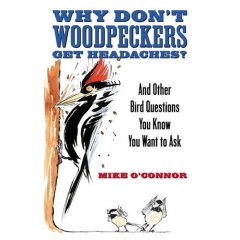 I have a question about the bird,
the albatross. A friend told me that it can never land on water
because if it does land it won't be able to take off again. Is
that true or did my friend have his facts wrong? I have a question about the bird,
the albatross. A friend told me that it can never land on water
because if it does land it won't be able to take off again. Is
that true or did my friend have his facts wrong?
- Peter, Harwich, MA
I'm glad you were clear, Peter,
Some people may have thought you were being redundant when you
specified "the bird, the albatross." I mean, what else
would an albatross be if it's not a bird? Well, there are tons
of other things that have borrowed the albatross's name, including
a type of plane, boat, hotel, and software program. There's even
an Albatross Pub, a place I must visit someday, for research
purposes only. What's interesting about naming stuff after the
bird, the albatross, is that most people have never seen one.
Albatrosses are diehard seabirds that have little use for land.
Thus, there isn't much chance of any of us ever seeing one, unless
you happen to be a sailor, a fisherman, a pirate, or Gilligan.
There are roughly two dozen
different species of albatrosses throughout the world. Most of
these birds are found in the North Pacific and in some crazy
new area called the "Southern Ocean." Have you ever
heard of that? Me neither, but it sounds like it's someplace
in the south. Only a few screwed up albatrosses ever make it
to New England, like the one that was found walking through a
cow pasture in Cape Neddick, Maine last spring.
The various albatross species
come with a whole assortment of names including the Short-tailed,
the Sooty, the Grey-headed, and my favorite, the Shy Albatross.
How cute is that? The one most of us are familiar with is the
Wandering Albatross. The Wandering Albatross is the bird that
was featured in The Rime of the Ancient Mariner, an endlessly
long poem that I tried to read last night but stopped after it
started to give me a headache. The bird is called "wandering"
because it spends years crisscrossing thousands of miles of ocean
without ever coming to land. This type of oceanographic wandering
should not be confused with the kind of wandering I sometimes
experience when I can't find my car in the mall parking lot.
That's something different.
 If
you are ever lucky enough to see a Wandering Albatross, you would
not be likely to soon forget it. The Wandering Albatross has
the largest wingspan of any bird in the world. One particular
bird's wingspan was close to twelve feet long. To give you an
idea how huge that is, stick both of your arms straight out,
like you did when you were a kid pretending to be an airplane.
Now, invite someone else to do the same thing and stand side-by-side,
touching fingertips. The distance from the tip of your outside
finger to the tip of your partner's outside finger is about how
long a Wandering Albatross's wings are. Doing this will not only
give you a good idea how long this bird's wingspan is, but it
is also a great pick up move. (You may want to write that down,
Peter.) If
you are ever lucky enough to see a Wandering Albatross, you would
not be likely to soon forget it. The Wandering Albatross has
the largest wingspan of any bird in the world. One particular
bird's wingspan was close to twelve feet long. To give you an
idea how huge that is, stick both of your arms straight out,
like you did when you were a kid pretending to be an airplane.
Now, invite someone else to do the same thing and stand side-by-side,
touching fingertips. The distance from the tip of your outside
finger to the tip of your partner's outside finger is about how
long a Wandering Albatross's wings are. Doing this will not only
give you a good idea how long this bird's wingspan is, but it
is also a great pick up move. (You may want to write that down,
Peter.)
The well-adapted Wandering
Albatross has a special tendon that locks its super-long wings
into place, allowing it to soar, glider-like, for hours on end
with little effort. The bird's habit of following oceangoing
ships made it a favorite bird of sailors who had grown bored
with the vast empty ocean, and each other. The bird appears to
follow the ships both day and night giving rise to the notion
that albatrosses are able to sleep on the wing. However, that
notion is widely considered to be false. Instead, when the bird
needs to rest, it simply lands on the water's surface, curls
up and goes to sleep. Yes, Peter, the albatross lands on the
water, on purpose. After it has a bit of a snooze, the bird wakes
up and is airborne in no time.
An albatross can take off from
either land or water, but it is far more comfortable in the air.
Its landings and takeoffs are sometimes an adventure. If there
is no wind the bird must run and flap for quite a while in order
to become airborne. And their terrestrial landings are more like
crash landings, often involving a somersault or two and looking
like the winning entry in America's Funniest Home Videos.
The Wandering Albatross is
a true seabird. The young birds may remain at sea for seven or
eight years before they return to land for the first time to
breed. The adult female albatross only lays a single egg and
she only nests once every two years. Since she is a large bird
her egg is also large, about the size of a Coke can, which may
explain why she only does it once every two years.
The albatross can definitely
take off from the water, Peter. When you tell your friend that
he was wrong, do it gently. Better yet, take him to the Albatross
Pub. After a while he won't care what you tell him.
Besides being a frequent
guest on Animal Radio®
- Mike O'Connor is the
owner of the Bird Watcher's General Store on Cape Cod, which
opened in 1983 as one of the first stores in the United States
dedicated solely to birding. His column, Ask the Bird Folks,
appears weekly in The Cape Codder, The Register, The Harwich
Oracle, and The Upper Cape Codder newspapers, and his writing
was included in the Best American Science and Nature Writing
2004. Copyright 2007 by Mike O'Connor. All Rights Reserved. http://www.BirdWatchersGeneralStore.com
| Reader and Listener Comments: |
EMAIL US: YourVoice@AnimalRadio.com
Michelle Leslie
Playa del Rey, CA
I have three dogs -- two yorkies
and one silkie mix. One yorkie and the silkie mix were rescues.
All three are fixed. I love my dogs (almost) more than anything
else in the whole world.
 I caught your show this morning
for the first time and heard "Ruth"? promoting her
dog and cat wigs. Some of them were made out of synthetic hair
and others were made out of European hair from ladies who wrapped
their heads in towels so that their hair would not be subjected
to the elements. And I understood that some of these wigs were
very expensive. I caught your show this morning
for the first time and heard "Ruth"? promoting her
dog and cat wigs. Some of them were made out of synthetic hair
and others were made out of European hair from ladies who wrapped
their heads in towels so that their hair would not be subjected
to the elements. And I understood that some of these wigs were
very expensive.
Aside from the thousands of people going through cancer and chemotherapy
and radiation therapy who really need wigs and who can't afford
wigs and whose lives are being turned around because of all the
medication and could certainly use an uplift in their lives by
having a wig to cover the loss of their hair, what makes this
woman (and whoever buys these wigs) think that the animals like
having a wig on them. These are sweet loving animals who will
do anything for you because they love you, why would you torture
(maybe that's too harsh a word) them by making them wear a wig?
They have a natural wig. They have natural clothes. And except
for maybe a sweater when it's really cold, I don't dress them
up either.
The people who make these wigs have way too much time on their
hands and the people who buy them have way too much money on
their hands, too. Perhaps that time and money could be redirected
to something really worthwhile and necessary.
Don't get me wrong -- I love my dogs and I treat them like children.
I wouldn't embarrass my two-legged child by making him wear strange
things.
Thank you for listening. It would be nice to make and donate
the wigs for people who need them.
Dog Heaven
As submitted by
Frank Di Silvestro
 If
your lovable dog passes away, If
your lovable dog passes away,
And you feel very sad and cry;
Remember there's a Dog Heaven
Where dogs go when they die.
And you can go there anytime
Close your eyes and count to seven.
And as you dream of your dog,
You'll be in Dog Heaven!
You'll enter through a pearly
gate,
As a heavenly voice will say,
"Welcome to Dog Heaven,"
Where Dogs play in a happy way.
A marvelous sight you will
see
In pretty green fields in the sun;
Countless, beautiful dogs
As they merrily bark and run.
Then your dog will gaily appear,
And into your arms it will dive;
Licking your face as you hug it,
They way you did when it was alive.
And you'll be greeted by so
many dogs,
They'll snuggle around you as if to say,
"We'll always be your dog's friend,"
As they look at you in a loving way.
Then you dog will run with
its friends
Across the fields with a joy so true;
Suddenly it will come running back
With a love only meant for you.
And you happy heart will tell
you
When you think of your dog and cry;
The love and joy you both shared
Is forever and will never die.
And then as you open your eyes,
They'll brightly gleam and shine;
As you happily smile knowing,
You can visit Dog Heaven anytime.
EMAIL US: YourVoice@AnimalRadio.com
|
ASPCA Compiles "Victory
List" of Federal and State Legislation Passed in 2007
NEW YORK-The ASPCA® (The
American Society for the Prevention of Cruelty to Animals®)
recently released a compilation of its 2007 "Victory List,"
a list of ASPCA-supported, animal-centered federal and state
legislation that its state and federal legislative experts worked
hard to get passed this year.
"2007 has been a signature
year for legislative victories on behalf of animals," said
ASPCA President and CEO Ed Sayres. "Our legislative representatives
worked closely with state and federal legislators to implement
these bills, and we owe it to our supporters to reflect the good
news as it continues to come in."
Federal legislation includes
a major victory with the passage of HR 147/S 261, the "Animal
Fighting Prohibition Enforcement Act of 2007," which prohibits
sponsoring or exhibiting an animal in an animal-fighting venture
if any of the animals in the venture have been moved across state
lines. The Act raises this crime from a misdemeanor to a felony
offense and intends to deter more people from engaging in the
brutal "sport" of animal fighting.
Five states, including Connecticut,
Nevada, Oregon, Texas and Virginia, passed bills addressing animals
in disasters, which require state and local civil preparedness
officials to create strategies to evacuate pets and service animals
in the event of a major disaster or emergency. This brings to
13 the total number of states with similar bills passed.
While three states (Maine,
New York and Vermont) already had pet protection laws on their
books, states that followed suit in 2007 included California,
Connecticut, Illinois, Nevada and Tennessee. The "Protection
Orders for Pets" bills permit courts to issue orders of
protection for animals owned or kept by victims of family violence.
Seven other states introduced similar legislation in 2007. Further,
in Indiana, animal cruelty was added to the "Definition
of Domestic Violence" with HB 1387, and includes crimes
involving animal cruelty used to threaten, intimidate, coerce,
harass or terrorize a family or household member.
After many years of contentious
struggle, cockfighting was finally made illegal in New Mexico,
and has now been banned in all 50 states, with Louisiana's prohibition
going into effect in August 2008. In Illinois, HB 3614 increased
the penalty for animal fighting to a felony, regardless of the
species of animal made to fight. Texas also increased the penalty
for dog fighting from a Class A
misdemeanor to a state jail felony, and Texas and Tennessee both
increased the punishment for attending a dog fighting exhibition
from a Class C to a Class A misdemeanor.
In two states, tethering laws
were passed: In Tennessee, dogs can no longer be chained in a
manner that is inhumane or prevents access to food, water or
shelter; and in Texas, HB 1411 prohibits the tethering of dogs
outdoors between the hours of 10 p.m. and 6 a.m., and during
extreme weather conditions.
Other highlights, by region,
include:
Eastern Region: Connecticut
passed HB 7194 (Spay/Neuter and Vaccination Programs), establishing
subsidized spay/neuter services and vaccination programs for
low-income pet owners, and expanding such services for feral
cat rescuers.
Western Region: Hawaii passed
SB 1665 (Felony-Level Penalties for Crimes Against Pets), creating
the state's first felony offense for cruelty to animals by adding
a new class C felony of 'cruelty to animals in the first degree.'
In Nevada, SB 329 (Dogs in Hot Cars) now prohibits a person from
allowing a cat or dog to remain unattended in a motor vehicle
under certain circumstances. And in Oregon, SB 694 (Animal Cruelty
Law) bans the use of gestation crates-metal enclosures that confine
breeding sows so severely that the animals cannot even turn around.
Texas' HB 2328 (Animal Cruelty Bill) aids the future prosecution
of cruelty cases by closing loopholes in the state's Animal Cruelty
Statute and protects feral animals, stray dogs and horses from
specific abuses.
Midwest Region: Illinois passed
HB 1711 (Ban on Horse Slaughter for Human Consumption) and SR
166, establishing the 'Dog Owners and Homeowner's Insurance Advisory
Committee' to study breed discrimination and homeowner's insurance
availability. Illinois also banned Internet Hunting. In Indiana,
SB 108 (Counseling for Animal Abusers) now requires courts to
consider psychological, behavioral or other forms of counseling
as part of the sentence imposed on an adult or juvenile who has
been found guilty of animal cruelty.
Northeast Region: In New York,
animal welfare program budget cuts were restored during last-minute
negotiations to finalize a state budget by the April 1 deadline.
New York also passed A1839/S3167, "Companion Animals for
Seniors," which provides for the state's Office for the
Aging to operate programs to match seniors with companion pets
to improve the lives of such seniors, and for the Office for
the Aging to work with other entities to provide such programs.
Southeast Region: In Tennessee,
SB 487/HB 953 (Bestiality) creates the crime of sexual abuse
of an animal and assesses felony level penalties for violations.
Tennessee also passed HJR 99 (Benefits of Spay/Neuter), a joint
resolution that details the many benefits of spaying and neutering
pets, and encourages all Tennesseans to be responsible pet owners
by spaying and neutering their pets.
A complete list of federal
and state legislative victories for animals can be found at http://www.aspca.org
The ASPCA encourages supporters
to join its free Advocacy Brigade, which allows people from all
over the country to take an active role in improving the lives
of animals. Advocacy Brigade members help promote the passage
of legislation, citizen initiatives and the adoption of public
policies that recognize animals as living, sentient beings who
warrant protection. Visit the www.aspca.org and click on "Lobby
for Animals" to learn more.
A final note from Animal Radio Network
Operation Manager: Hal Abrams
2007 was quite the year for
the animals. From the pet-food recall to Michael Vick going to
jail for dog-fighting - Animal Radio® newsrooms have stayed pretty busy.
Statistics are showing that you're interested in knowing what's
happening in the animal world. In 2007, we experimented with
some great new technologies; expanding our reach and breadth.
We will continue to bring you the world of fur, scales, feathers
and other animals, straight to you via the distribution method
you select.
Besides getting the latest
animal news through our 95+ AM-FM radio stations, you may also
hear Animal
Radio® on any cell phone (simply text "ANIMAL"
to 27627), streaming live 24/7 at AnimalRadio.com, and downloadable
from a computer near you. We also offer RSS (Real Simple Syndication)
feeds that include audio and up-to the minute news. And even
better, now you can get your animal news headlines delivered directly to your
e-mailbox everyday.
We want you to have the latest
and best information available so that you can make informative
decisions for your pets welfare.
More than ever, humans are
inviting furry friends into their lives, discovering the wonderful
connection and lessons these creatures have to impart. We want
to be that glue that connects you and your pets together forever!
Stay connected with Animal Radio® all through '08 - we've got great
things happening. You and your furry family are invited to join
us!
LISTEN TO ANIMAL RADIO NETWORK NOW
Return to Menu
Go to AnimalRadio.com
|
| Search Animal Radio®
Network |
|
|
|
|
 FINAL POOP FINAL POOP
* COPYRIGHTS:
Animal Radio® and
Animal Radio® Network
are Registered Trademarks of Animal Radio Network LLC, and may
not be used in affiliation without express written consent of
Animal Radio Network LLC. Material in this newsletter may not
be published or broadcast without permission. All rights reserved
- Fair Use Notice: The not-for-profit educational reproduction
of some articles contained within this newsletter constitutes
fair use of the copyrighted material as provided for in section
107 of the US Copyright Law.}
 * CONTRIBUTIONS, EDITORIALS OR SUBMISSIONS
to Animal Radio® Network
Newsletter or Programming may be sent to: 233 East 330 North,
Kanab, UT. 84741 or root@animalradio.com.
Unsolicited manuscripts may not be returned. See our website for additional information
about article submissions. Email your editorial comments or opinions
to us at: YourVoice@AnimalRadio.com * CONTRIBUTIONS, EDITORIALS OR SUBMISSIONS
to Animal Radio® Network
Newsletter or Programming may be sent to: 233 East 330 North,
Kanab, UT. 84741 or root@animalradio.com.
Unsolicited manuscripts may not be returned. See our website for additional information
about article submissions. Email your editorial comments or opinions
to us at: YourVoice@AnimalRadio.com
* If you're a RADIO PROGRAMMER
and would like to air ANIMAL RADIO®
- call 435-644-5992 to get all the information you need to begin
broadcasting America's number one animal talk show geared to
listeners that like to have FUN! Animal Radio® programming is FREE for your station
- and delivered via Satellite (Jones and ABC/NY Starguide) or
Compact Disc or MP3 every week.
 *
ADVERTISING OPPORTUNITIES for 2008 ANIMAL RADIO®
PROGRAMMING available. Call 435.644.5992. Animal Radio® Network, according to Arbitron radio
ratings, is the most-listened-to animal programming in the United
States. Animal Radio® airs
weekly in ninety-plus cities. Our affiliate stations are top
performers including KOST 103.5 in Los Angeles. Animal Radio® is the most concentrated radio audience
of targeted animal lovers anywhere! Please contact us for aggressive
and omnipotent branding and cultivating customer loyalty. Advertising
opportunities in this newsletter are also available. 40,000 subscribers
are reading this newsletter right now! *
ADVERTISING OPPORTUNITIES for 2008 ANIMAL RADIO®
PROGRAMMING available. Call 435.644.5992. Animal Radio® Network, according to Arbitron radio
ratings, is the most-listened-to animal programming in the United
States. Animal Radio® airs
weekly in ninety-plus cities. Our affiliate stations are top
performers including KOST 103.5 in Los Angeles. Animal Radio® is the most concentrated radio audience
of targeted animal lovers anywhere! Please contact us for aggressive
and omnipotent branding and cultivating customer loyalty. Advertising
opportunities in this newsletter are also available. 40,000 subscribers
are reading this newsletter right now!
* WEBMASTERS: Offer your
web-visitors Animal Radio®
audio content when they visit your website. Cut and paste the
code below to create a graphical link directly to the Animal
Radio®.
<A HREF="http://animalradio.com/cfc.mp3">
<IMG SRC="http://animalradio.com/listenowbutton.gif"
ALIGN="BOTTOM" BORDER="1" ALT="AnimalRadio.com"></A>
Offer your web-visitors
Pet Headline News:
Give your visitors up-to-the-minute
news headlines direct from Animal Radio® - Put this
Animal Radio® News Module on your website. Place the following code
where you want the module to show up. 
<p style="margin-top:10px;
margin-bottom:0; padding-bottom:0; text-align:center; line-height:0">
<a href="http://feeds.feedburner.com/~r/AnimalRadioNews/~6/1"
TARGET="_blank">
<img src="http://feeds.feedburner.com/AnimalRadioNews.1.gif"
alt="Animal Radio News" style="border:0"></a></p>
<p style="margin-top:5px; padding-top:0; font-size:x-small;
text-align:center">
* HOW TO UNSUBSCRIBE FROM
THIS NEWSLETTER (sorry to see you go!) To be Removed from
this list - Please reply
with "Unsubscribe" in the subject line. You will be
removed within 24 hours. NOTE: You must reply from the exact
same address that you used to sign up for this newsletter. WANT
TO SUBSCRIBE? Go to http://AnimalRadio.com
to sign up from the front page.
Copyright 2008
Animal Radio® Network LLC
|
|